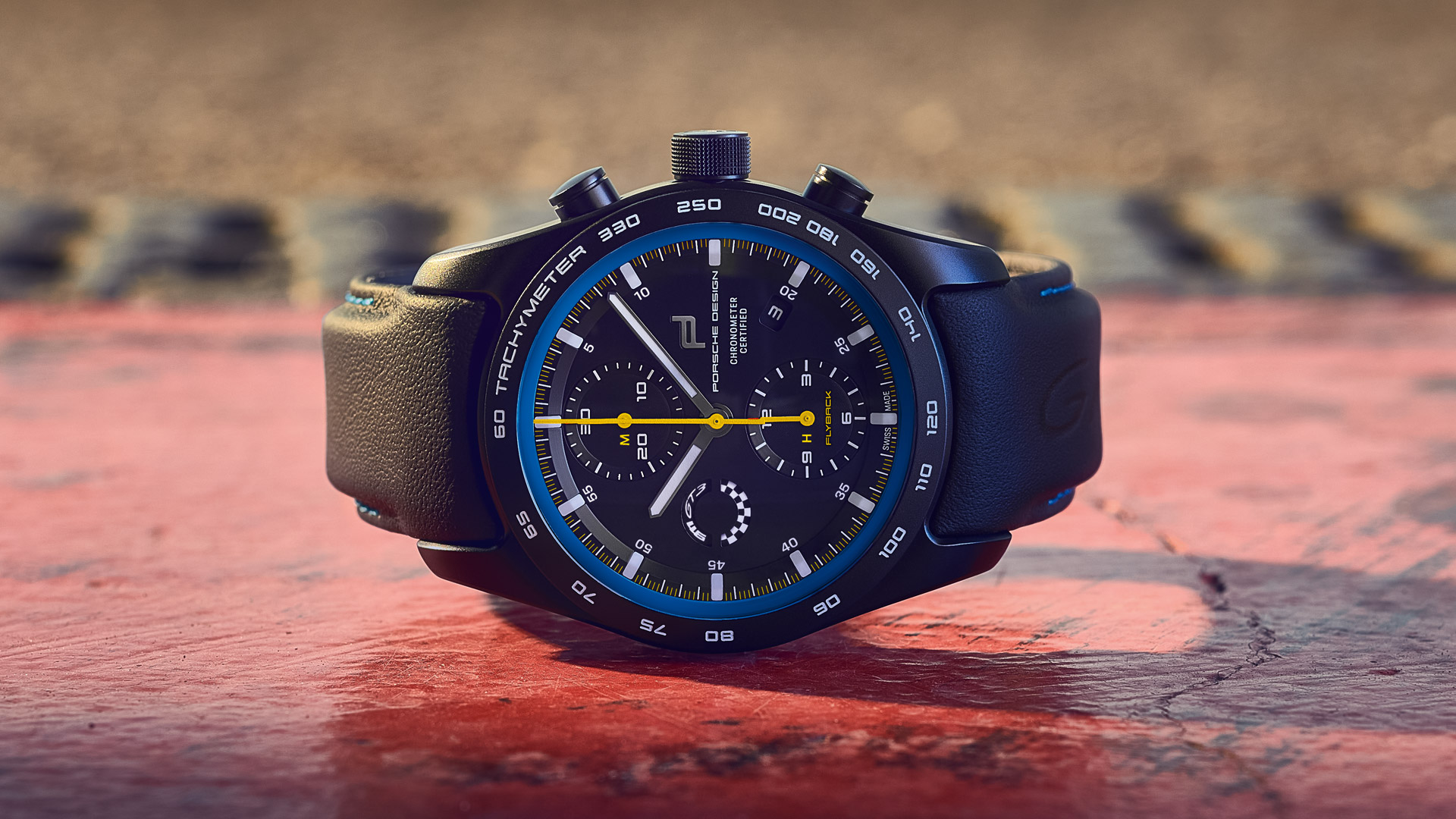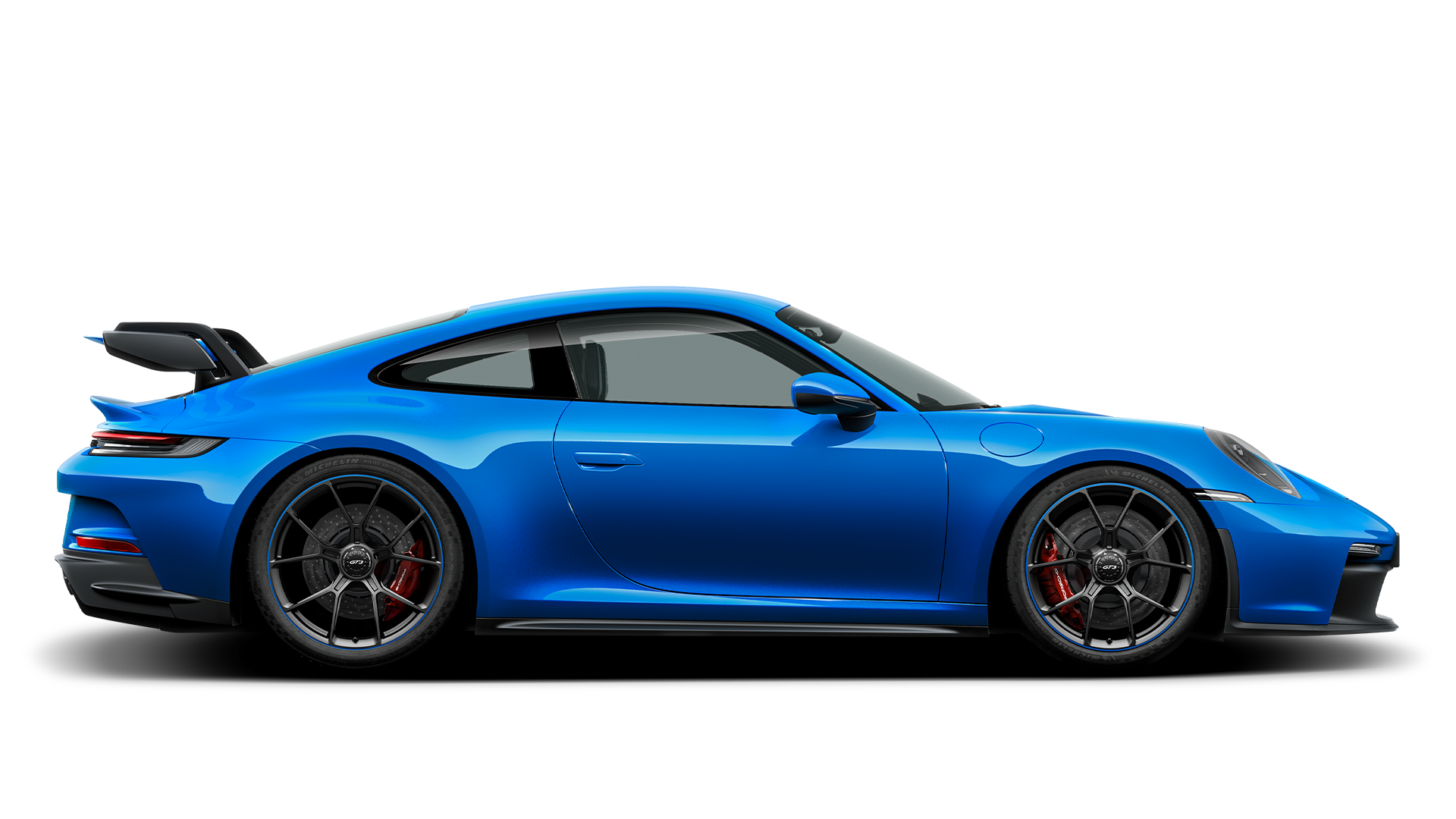

We know that your time is precious. And every minute in the cockpit is valuable. So, we have once again intensified everything that makes a sports car: performance, tuning, aerodynamics.
Time flies. This is your time. Hop in.
360° Exterior.



360° Interior.
Discover the 911 GT3 models in detail.
You already know the highlights. Here are more details about the individual chapters.

Aerodynamics and design
Discover more about the extremely aerodynamic exterior.
open chapterPerformance
Be inspired by the unbeatable performance.
open chapterInterior and infotainment
Discover more about assistance systems and infotainment.
open chapterMotorsport
Discover the roots of the 911 GT3 – motorsport.
open chapterTouring Package
Motorsport look meets understatement: the 911 GT3 with Touring Package.
open chapterSelect and configure 911 GT3 models.
| Number of cylinders | 6 |
| Bore | 102,0 mm |
| Stroke | 81,5 mm |
| Displacement | 3.996 cm³ |
| Power (kW) | 375 kW |
| Power (PS) | 510 PS |
| RPM point maximum power | 8.400 1/min |
| Maximum engine speed | 9.000 1/min |
| Max. torque | 470 Nm |
| RPM point maximum torque | 6.100 1/min |
| Max. output per liter (kW/l) | 93,80 kW/l |
| Max. output per liter (PS/l) | 127,60 PS/l |
| Top speed (Manual) | 320 km/h |
| Top speed (PDK) | 318 km/h |
| Acceleration 0 - 100 km/h (Manual) | 3,9 s |
| Acceleration 0 - 100 km/h (PDK) | 3,4 s |
| Acceleration 0 - 160 km/h (Manual) | 7,9 s |
| Acceleration 0 - 160 km/h (PDK) | 7,0 s |
| Acceleration 0 - 200 km/h (Manual) | 11,9 s |
| Acceleration 0 - 200 km/h (PDK) | 10,8 s |
| Flexibility (80-120 km/h) (50-75 mph) in 5th gear (Manual) | 5,9 s |
| In-gear acceleration (80-120km/h) (50-75 mph) (PDK) | 1,9 s |
| Length | 4.573 mm |
| Width | 1.852 mm |
| Width (with mirrors) | 2.027 mm |
| Height | 1.279 mm |
| Wheelbase | 2.457 mm |
| Turning circle | 10,4 m |
| Unladen weight (DIN) (Manual) | 1.418 kg |
| Unladen weight (DIN) (PDK) | 1.435 kg |
| Unladen weight (EU) (Manual)1) | 1.493 kg |
| Unladen weight (EU) (PDK)1) | 1.510 kg |
| Permissible gross weight (Manual) | 1.765 kg |
| Permissible gross weight (PDK) | 1.782 kg |
| Maximum load | 347 kg |
1) Weight is calculated in accordance with the relevant EC Directives and is valid for vehicles with standard specification only. Optional equipment increases this figure. The figure given includes 75kg for the driver
| Luggage compartment volume, front | 132 l |
| Fuel consumption urban (Manual) | 21,5 - 21,5 l/100 km |
| Fuel consumption urban (PDK) | 20,4 - 20,4 l/100 km |
| Fuel consumption suburb (Manual) | 12,7 - 12,7 l/100 km |
| Fuel consumption suburb (PDK) | 12,4 - 12,4 l/100 km |
| Fuel consumption extra urban (Manual) | 11,1 - 11,1 l/100 km |
| Fuel consumption extra urban (PDK) | 11,5 - 11,5 l/100 km |
| Fuel consumption highway (Manual) | 11,5 - 11,5 l/100 km |
| Fuel consumption highway (PDK) | 11,9 - 11,9 l/100 km |
| Fuel consumption combined (Manual) | 12,9 - 12,9 l/100 km |
| Fuel consumption combined (PDK) | 13,0 - 13,0 l/100 km |
| CO2-emissions low (WLTP) (Manual) | 487 - 487 g/km |
| CO2-emissions low (WLTP) (PDK) | 463 - 463 g/km |
| CO2-emissions medium (WLTP) (Manual) | 288 - 288 g/km |
| CO2-emissions medium (WLTP) (PDK) | 280 - 280 g/km |
| CO2-emissions high (WLTP) (Manual) | 251 - 251 g/km |
| CO2-emissions high (WLTP) (PDK) | 259 - 259 g/km |
| CO2-emissions extra high (WLTP) (Manual) | 260 - 260 g/km |
| CO2-emissions extra high (WLTP) (PDK) | 269 - 269 g/km |
| CO2-emissions combined (WLTP) (Manual) | 293 - 293 g/km |
| CO2-emissions combined (WLTP) (PDK) | 294 - 294 g/km |
| Sound level of stationary vehicle (Manual) | 97 dB(A) |
| Sound level of stationary vehicle (PDK) | 98 dB(A) |
| Sound level of stationary vehicle (rpm) | 3.658 1/min |
| Sound level of passing vehicle | 72 dB(A) |
Gallery.


Personalisation & finishing.
In the

Contact.
Contact your authorized

























































































